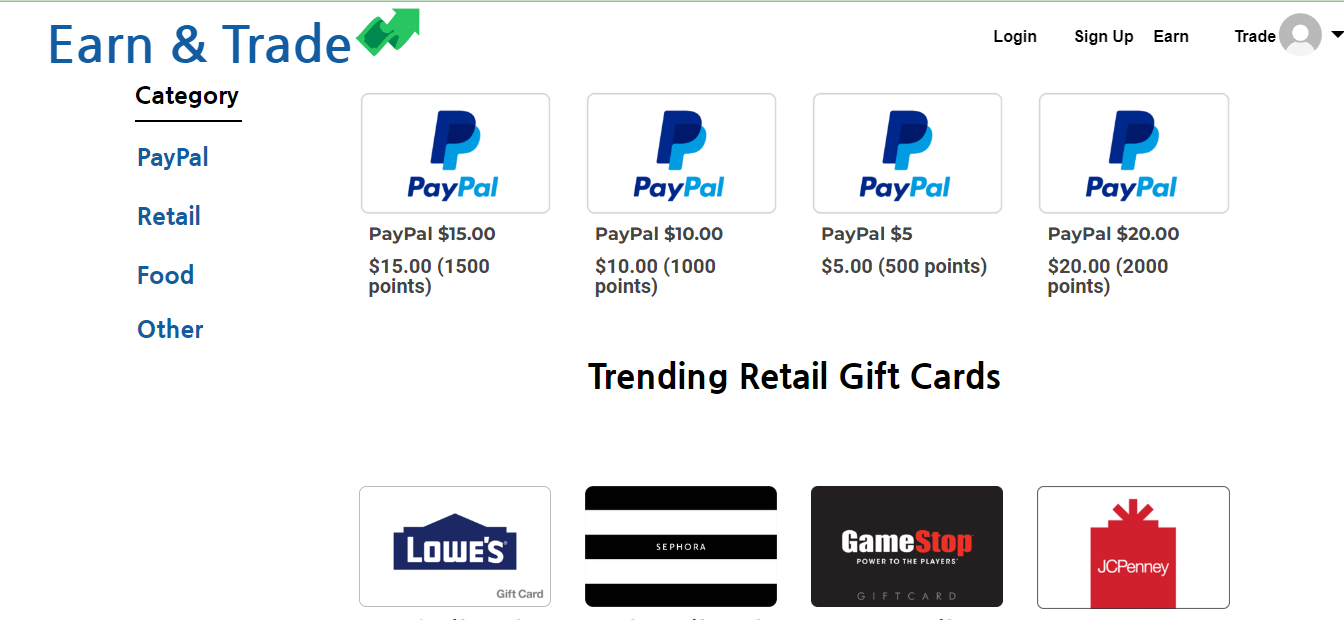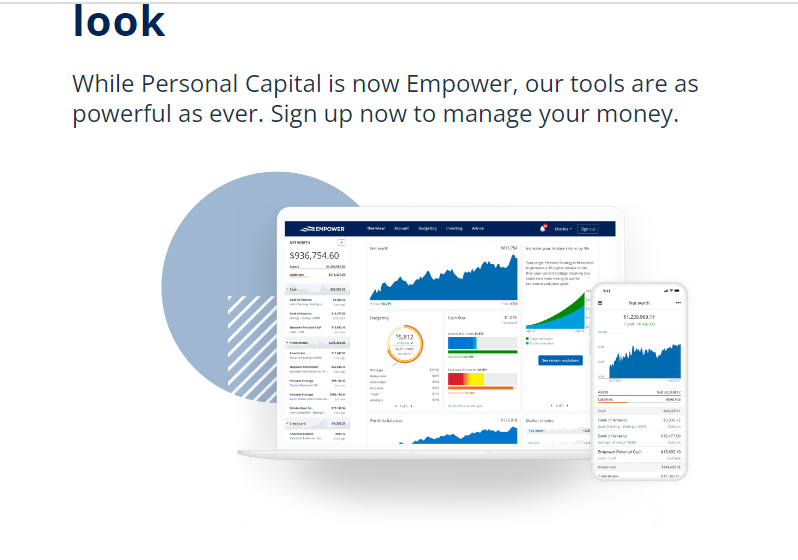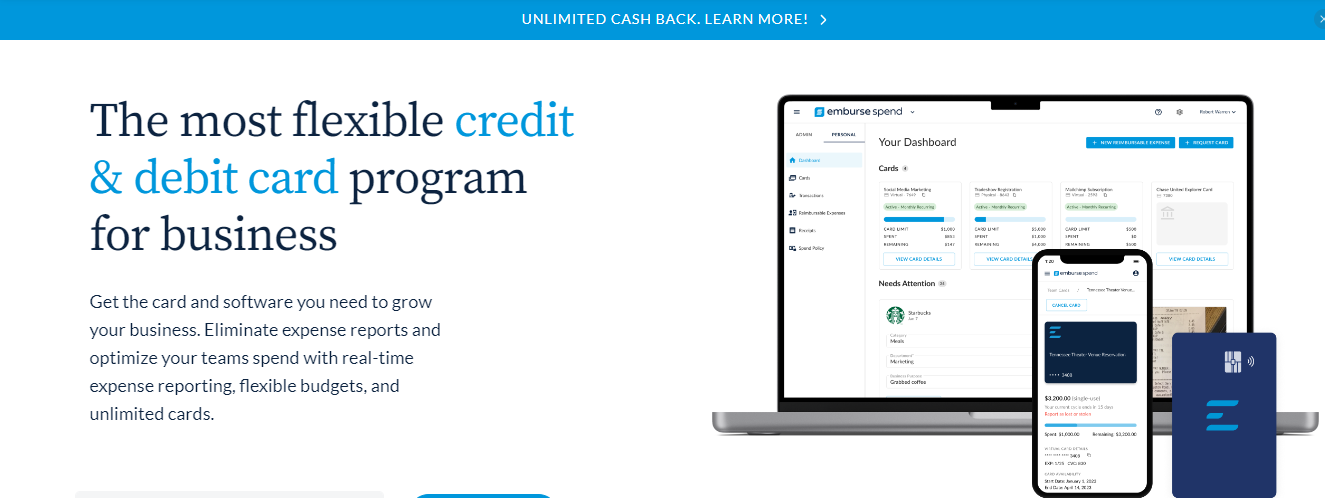Step By Step Guide On Mortgage Rate

It’s a common saying that buying a home may be one of the biggest — if not the biggest — financial decisions you’ll make in your lifetime. It’s potentially one of the biggest investments you’ll make, too, which is why it’s important to understand some of the key financial aspects involved in the purchase and ownership of a home.
If your dream is to own your home someday, taking out a mortgage will likely be a key element of your purchasing journey. If you’re not yet familiar with mortgages and all they entail, learn all you need to know about the basics, from what exactly mortgages are to what the different types look like.
What is a Mortgage?
It’s safe to say that most people don’t have lump sums of cold, hard cash sitting in their bank accounts to buy homes outright. But it’s still possible for them to purchase new homes — and that’s where a mortgage comes in. A mortgage is a type of loan used to finance real estate or vacant property. If you don’t have the money to purchase a home outright, this type of loan allows you to do so.
With a mortgage, a bank agrees to loan a borrower the money to buy a home with the understanding that the borrower will pay back the amount of the loan, plus interest, for an agreed-upon length of time. But what happens if the borrower stops making payments? A mortgage is a “secured” loan, which means that the lender is protected because the borrower has agreed to offer a form of collateral to back the loan. In the case of a mortgage, the collateral is the home itself. If the borrower stops making payments on the property or is unable to continue doing so, the bank can legally take possession of the home and force the occupants to leave.
Because you never fully own a home until you pay off your mortgage, it’s important to make sure that you never take out a mortgage unless you’re reasonably sure you can pay it off. While banks tend to employ a stricter set of lending practices now, the 2008 housing crisis was evidence of what can happen when a large number of people suddenly find themselves unable to repay their mortgages.
When you take out a mortgage, the amount of the loan you’ll be able to get will depend on several factors. The first is the value of the home that you hope to buy, which is determined through an appraisal. The bank also takes into account things like your credit history, any assets you have, and your employment. This helps the bank determine how much money you can realistically afford to pay back — and thus the amount of money it’ll determine is safe to lend to you.
This is one of many reasons that it’s important to make sure your credit score is in the best shape possible. The better your credit score is, the better your chances are of getting the best possible interest rate on your mortgage. When you have a higher credit score, you’ll be considered less of a risk to lend to because you’ve demonstrated in the past that you’re responsible with money. You’ll likely enjoy a lower interest rate than someone on the riskier side of the credit score spectrum.
You’ll also likely get a better rate if you’re able to make a bigger down payment. The down payment is simply the amount that you’re able to pay towards the price of the home upfront — money you won’t need the bank to loan to you. If your down payment amount is on the higher end, say 20% of the home’s purchase price, you’ll likely enjoy lower monthly payments as well as a lower interest rate. If you put down a smaller amount up front, you may be required to pay for private mortgage insurance in addition to your monthly payments.

In essence, the less financially risky you appear to lenders, the lower the rates you’ll ultimately pay.
Types of Mortgage
Most of the time when shopping for a mortgage, you’ll be choosing between a fixed-rate mortgage and an adjustable-rate mortgage.
Before you set out to get a mortgage loan, it’s important to understand that not all mortgages are the same. You also need to be sure you understand the terms and conditions of your loan before signing on the dotted line. Mortgage types commonly vary based on their interest rates or an extra percentage on top of your mortgage repayment amount that you pay to the bank for the privilege of being extended a loan. The most common types of mortgages include the following.
Fixed-Rate Mortgages
A fixed-rate mortgage is the most common type and is also often referred to as a “traditional” mortgage. When you sign up for a fixed-rate mortgage, you agree to pay back your mortgage loan over a set number of years at an interest rate that never changes over the lifetime of the loan.
With a fixed-rate mortgage, you will pay a fixed monthly interest until you clear the loan. Fixed-rate mortgages offer higher interest from the start, but you will enjoy certainty and consistency.
Your monthly payment amount isn’t likely to change over the entire course of a traditional fixed-rate mortgage. The most common timelines for a fixed-rate mortgage are 15 and 30 years, but they can be shorter or longer, depending on how much you can afford to pay. If you stretch your loan out over a longer term, you’ll have lower monthly payments but will also pay more in interest over time.
Adjustable-Rate Mortgages (ARMs)
Unlike a fixed-rate mortgage, the interest rate of an adjustable-rate mortgage can change over time. Sometimes also called “variable-rate mortgages” or “floating mortgages,” you’ll often get a lower interest rate on this type of loan, but it’ll last only for a set period.
The interest rates of adjustable-rate mortgages change within the repayment period. You will start by paying low interest rates for the first seven or ten years, but the interest will increase over time depending on the economic conditions. Adjustable-rate mortgages have lower introductory interest rates, but the amount increases after some time, which could land you in a pinch if you do not have a flow of income that will accommodate your rising rate.
After that, the bank can readjust it on a yearly or even monthly basis, based on a benchmark, index, or ARM margin. While it can be possible to enjoy savings when the mortgage has a lower interest rate if that rate rises, you may find your monthly payments are suddenly consuming a much larger portion of your budget. It can seem attractive in the beginning, but your monthly payments will be at risk of rising due to interest throughout the entire course of your loan.
Interest-Only Mortgages
Interest-only mortgages are less common, and you should generally only opt for this type under a few specific circumstances. With any type of loan, you repay both the principal (the amount of money you borrowed) and the interest (the extra percentage of the principal that’s added to your monthly bill.)
An interest-only mortgage allows you to pay back only the interest for a set amount of time, which is known as the introductory period. While this can be helpful in the short term, be aware that you need to have a very solid plan in place about how you’ll handle the much larger payments once the introductory period ends and you begin repaying the principal, too. Usually, interest-only loans are written as parts of adjustable-rate mortgages and are referred to as interest-only ARMs. After the introductory period, some buyers pay off the rest of these loans in one large lump sum, while others take on much higher monthly payments or renegotiate their loan terms.
No matter what size of the loan you plan to take out, it’s essential to do your research to get a mortgage that suits your financial situation. Online tools like mortgage calculators can help you plan and understand how much you’ll need to save to reach your buying goals.

Defining Mortgage Rates
A mortgage rate is the interest rate you pay your mortgage lender, and it determines how much you will end up paying for the property. The higher the interest rates, the more you are going to pay overall. Mortgage rates are calculated by the lender based on the current economic status (which you have no control over) and personal factors like credit score, occupancy, size of the loan, down payment, and more. We’ll break down the different types of mortgage rates you might select, as well as steps you can take to get the best rate.
How Mortgage Rates Are Set
Are you in the market for a new home? If you are, you’re probably also shopping around for the best mortgage rate. How can you be sure that you’re getting the best deal? Understanding what a mortgage rate is and how it is determined can help you figure out how to secure the best rate possible.
Mortgage rates are set using market factors like federal rates, and personal factors like your credit score. The lender uses these factors to assess the risk level of the loan, or in other words, the likelihood that you won’t be able to pay back what they lend you. This assessment determines the mortgage rate they will offer you.
Below are some factors that determine how mortgage rates are set.
1. Mortgage Bond Market
We all know that banks make money on our mortgages, but mortgages aren’t just simple loans that your bank makes to you and then profits from via interest. Instead, banks package mortgages into mortgage-backed securities (MBS) and sell them to investors, acting as a middleman.
Just like many other forms of investing, investors make decisions about what to purchase based on how risky the investment seems. In this case, a stable housing market in a good economy makes investments seem less risky, and so investors will be willing to buy MBSs at lower interest rates. If the market is shaky or inflation is on the rise, investors will be looking for higher interest rates to justify the risks. And this is one of the things that will determine the interest you pay on your mortgage
2. Your Credit History
Your credit history plays a significant role in determining the mortgage rate you receive. Your credit score tells the lender how much risk they are taking to lend you money—the higher your credit score, the lower the mortgage rate, and vice versa.
3. Current Market Interest Rates
The Federal Reserve sets federal fund rates, which are tools that determine the interest rates at which financial institutions borrow from each other. If the national fund rates are high, it will be expensive for banks and other financial institutions to lend to each other. This increases the interest rates of investment products like mortgages. This is out of your control, and if you need to buy a house at a time when fund rates are high, you may consider refinancing your mortgage down the line when rates are lower.
4. Length of Mortgage
Financial institutions consider long-term mortgages riskier and charge higher interest rates for them. The assumption is that a person who takes a 30-year mortgage is more likely to default, so banks charge high interest rates to cover the risk. On the other hand, a 10-year mortgage is considered less risky and comes with lower rates.
5. Occupancy
How you plan to use the house plays a significant role in determining your mortgage rate. A primary house will get a lower interest rate than an investment property, the reason for which again boils down to risk. The assumption is that if you experience a financial crisis along the way to paying off your mortgage, you will work harder to make payments for a primary house, because that is where you live, whereas you can more easily abandon a rental property that is not making you money.
How Mortgage Rates Work
The mortgage rate a lender offers you is determined by a mix of factors that are specific to you and larger forces that are beyond your control.
Lenders will have a base rate that takes the big stuff into account and gives them some profit. They adjust that base rate up or down for individual borrowers depending on perceived risk. If you seem like a safe bet to a lender, you're more likely to be offered a lower interest rate.
Factors you can change:
- Your credit score. Mortgage lenders use credit scores to evaluate risk. Higher scores are seen as safer. In other words, the lender is more confident that you'll successfully make your mortgage payments.
- Your down payment. Paying a larger percentage of the home's price upfront reduces the amount you're borrowing and makes you seem less risky to lenders. You can calculate your loan-to-value ratio to check this out. An LTV of 80% or more is considered high.
- Your loan type. The kind of loan you're applying for can influence the mortgage rate you're offered. For example, jumbo loans tend to have higher interest rates.
- How you're using the home. Mortgages for primary residences — a place you're going to live — generally get lower interest rates than home loans for vacation properties, second homes, or investment properties.

Forces you can't control:
- The U.S. economy. Sure, this means Wall Street, but non-market forces (for example, elections) can also influence mortgage rates. Changes in inflation and unemployment rates tend to put pressure on interest rates.
- The global economy. What's happening around the world will influence U.S. markets. Global political worries can move mortgage rates lower. Good news may push rates higher.
- The Federal Reserve. The nation’s central bank attempts to guide the economy with the twin goals of encouraging job growth while keeping inflation under control. Decisions made by the Federal Open Market Committee to raise or cut short-term interest rates can sometimes cause lenders to raise or cut mortgage rates.
How (and why) to compare mortgage rates
Mortgage rates like the ones you see on this page are sample rates. In this case, they're the averages of rates from multiple lenders. They let you know about where mortgage rates stand today, but they might not reflect the rate you'll be offered.
When you look at an individual lender's website and see mortgage rates, those are also sample rates. To generate those rates, the lender will use a bunch of assumptions about their “sample” borrower, including credit score, location, and down payment amount. Sample rates also sometimes include discount points, which are optional fees borrowers can pay to lower the interest rate. Including discounts and points will make a lender's rates appear lower.
To see more personalized rates, you'll need to provide some information about yourself and about the home you want to buy. For example, at the top of this page, you can enter your ZIP code to start comparing rates. On the next page, you can adjust your approximate credit score, the amount you're looking to spend, your down payment amount, and the loan term to see rate quotes that better reflect your situation.
Whether you're looking at sample rates on lenders' websites or comparing personalized rates here, you'll notice that interest rates vary. This is one reason why it's important to shop around when you're looking for a mortgage lender. Fractions of a percentage might not seem like they'd make a big difference, but you aren't just shaving a few bucks off your monthly mortgage payment, you're also lowering the total amount of interest you'll pay over the life of the loan.
It's a good idea to apply for mortgage preapproval from at least three lenders. With pre-approval, the lenders verify some of the details of your finances, so both the rates offered and the amount you're able to borrow will be real numbers. Each lender will provide you with a Loan Estimate. These standardized forms make it easy to compare interest rates as well as lender fees.
When you're comparing rates, you'll usually see two numbers — the interest rate and the APR. The APR, or annual percentage rate, is usually the higher of the two because it takes into account both the interest rate and the other costs associated with the loan (like those lender fees). Because of this, APR is usually considered a more accurate measure of the cost of borrowing.
Factors that Determine Your Mortgage Interest Rate
Your lender knows how your interest rate gets determined, and we think you should, too. Learn more about the factors that affect your interest rate.
If you’re like most people, you want to get the lowest interest rate that you can find for your mortgage loan. But how is your interest rate determined? That can be difficult to figure out for even the savviest of mortgage shoppers. Knowing what factors determine your mortgage interest rate can help you better prepare for the home-buying process and for negotiating your mortgage loan.
Your lender knows how your interest rate gets determined, and we think you should, too. Our Explore Interest Rates tool lets you plug in some of the factors that affect your interest rate. You can see what rates you might expect—and how changes in these factors may affect interest rates for different types of loans in your area.
Even saving a fraction of a percentage on your interest rate can save you thousands of dollars over the life of your mortgage loan, so it pays to prepare, shop around, and compare offers.
Armed with information, you can have confident conversations with lenders, ask questions, and understand your loan choices. Interest rates, just like gasoline prices, can fluctuate from day to day and from year to year. While movement in the interest rate market is outside of your control, it makes sense—just like with gasoline prices—to gain awareness about what’s typical. This way, you’ll have a sense of whether an interest rate quote you receive appears to be in the range of typical rates.
Here are seven key factors that affect your interest rate that you should know
1. Credit scores
Your credit score is one factor that can affect your interest rate. In general, consumers with higher credit scores receive lower interest rates than consumers with lower credit scores. Lenders use your credit scores to predict how reliable you’ll be in paying your loan. Credit scores are calculated based on the information in your credit report, which shows information about your credit history, including your loans, credit cards, and payment history.
Before you start mortgage shopping, your first step should be to check your credit and review your credit reports for errors. If you find any errors, dispute them with the credit reporting company. An error on your credit report can lead to a lower score, which can prevent you from qualifying for better loan rates and terms. It can take some time to resolve errors on your credit reports, so check your credit early in the process.
2. Home location
Many lenders offer slightly different interest rates depending on what state you live in. To get the most accurate rates, you’ll need to consider your state, and depending on your loan amount and loan type, your county as well.
If you are looking to buy in a rural area, you will get a sense of the rates available to you but you will want to shop around with multiple lenders, including local lenders. Different lending institutions can offer different loan products and rates. Regardless of whether you are looking to buy in a rural or urban area, talking to multiple lenders will help you understand all of the options available to you.
3. Home price and loan amount
Homebuyers can pay higher interest rates on loans that are particularly small or large. The amount you’ll need to borrow for your mortgage loan is the home price plus closing costs minus your down payment. Depending on your circumstances or mortgage loan type, your closing costs and mortgage insurance may be included in the amount of your mortgage loan, too.
If you’ve already started shopping for homes, you may have an idea of the price range of the home you hope to buy. If you’re just getting started, real estate can help you get a sense of typical prices in the neighbourhoods you’re interested in.
4. Down payment
In general, a larger down payment means a lower interest rate, because lenders see a lower level of risk when you have more stake in the property. So if you can comfortably put 20% or more down, do it—you’ll usually get a lower interest rate.per cent
If you cannot make a down payment of 20% or more, lenders will usually require you to purchase mortgage insurance, sometimes known as private mortgage insurance (PMI). Mortgage insurance, which protects the lender in the event a borrower stops paying their loan, adds to the overall cost of your monthly mortgage loan payment.
As you explore potential interest rates, you may find that you could be offered a slightly lower interest rate with a down payment of just under 20%, compared with one of 20% or higher. That’s because you’re paying mortgage insurance—which lowers the risk for your lender.
It’s important to keep in mind the overall cost of a mortgage. The larger the down payment, the lower the overall cost to borrow. Getting a lower interest rate can save you money over time. But even if you find you’ll get a slightly lower interest rate with a down payment of less than 20%, your total cost to borrow will likely be greater since you’ll need to make the additional monthly mortgage insurance payments. That’s why it’s important to look at your total cost to borrow, rather than just the interest rate.
Make sure you are factoring in all of the costs of your loan when you are shopping around to avoid any costly surprises. You need to know how different down payment amounts will affect both your mortgage interest rate and the amount of interest you’ll pay over the life of the loan.
5. Loan term
The term, or duration, of your loan, is how long you have to repay the loan. In general, shorter-term loans have lower interest rates and lower overall costs, but higher monthly payments. A lot depends on the specifics—exactly how much lower the amount you’ll pay in interest and how much higher the monthly payments could be depending on the length of the loans you're looking at as well as the interest rate.
6. Interest rate type
Interest rates come in two basic types: fixed and adjustable. Fixed interest rates don’t change over time. Adjustable rates may have an initial fixed period, after which they go up or down each period based on the market.
Your initial interest rate may be lower with an adjustable-rate loan than with a fixed-rate loan, but that rate might increase significantly later on.
7. Loan type
There are several broad categories of mortgage loans, such as conventional, FHA, USDA, and VA loans. Lenders decide which products to offer, and loan types have different eligibility requirements. Rates can be significantly different depending on what loan type you choose.
Talking to multiple lenders can help you better understand all of the options available to you, or if you should ask more questions and continue to shop around. One more thing to consider is The trade-off between points and interest rates. As you shop for a mortgage, you’ll see that lenders also offer different interest rates on loans with different “points.”

Points, also known as discount points, lower your interest rate in exchange for an upfront fee. Generally, points and lender credits let you make tradeoffs in how you pay for your mortgage and closing costs.
- By paying points, you pay more upfront, but you receive a lower interest rate and therefore pay less over time. Points can be a good choice for someone who knows they will keep the loan for a long time.
- Lender credits might lower your closing costs in exchange for a higher interest rate. You pay a higher interest rate and the lender gives you money to offset your closing costs. When you receive lender credits, you pay less upfront, but you pay more over time with the higher interest rate. Keep in mind that some lenders may also offer lender credits that are unconnected to the interest rate you pay—for example, a temporary offer, or to compensate for a problem.
There are three main choices you can make about points and lender credits:
1. You can decide you don’t want to pay or receive points at all.
2. You can pay points at closing to receive a lower interest rate.
3. You can choose to have lender credits and use them to cover some of your closing costs but pay a higher rate.
Tips on How To Get The Best Mortgage Rate:
As you plan to apply for a mortgage, it is crucial to examine your qualifying factors to earn you the best possible mortgage rate. The tips below will help you get the best interest rates and save you money.
1. Improve Your Credit Score
Your credit score communicates your ability to pay the debt. A low credit score might not disqualify you from getting a mortgage but brands you as a high-risk borrower, a title that earns you costly borrowing terms. On the other hand, a high credit score helps the bank trust in your repayment ability, and feel confident in giving you a lower mortgage rate.
Work to build your credit score by paying debts on time, clearing credit card balances, and getting a secured credit card if you do not have one. Check your credit reports regularly and clear any errors or mistakes before approaching your mortgage lender.
2. Make a Substantial Down Payment
Some lenders advertise that they can give you a 0% down payment mortgage, but they do not tell you that this will come with a high mortgage rate. Financial experts advise paying at least 20% of the cost of the house in your down payment, thus reducing the amount you will need to borrow. With a 20% down payment, you are more likely to secure a lower mortgage rate and low monthly payments. This will also save you on private mortgage insurance.
3. Take a Short-Term Fixed-Rate Mortgage
Mortgage lenders can give you up to 30-year mortgages; however, if you have a good flow of income, consider a 10 or 15-year mortgage because the interest rates for short-term mortgages are lower. The monthly payments will be higher, but you will pay less for the property than a borrower who takes out a 30-year loan.
4. Consider Homebuyer Programs
The government understands that homeownership is an uphill journey for many people. In response, some states have developed programs that offer low mortgage rates or down payment grants to help citizens buy homes in specific locations. If you come across such programs, take advantage, but always confirm they are genuine before giving them your hard-earned money.
5. Compare Lenders
Never settle for the first lender you come across, even if they offer you the lowest interest rate. While it is essential to consider the lender with the lowest interest rates, other factors like ledger fees and the Annual Percentage Rate affect the total cost of a loan. Ask for quotes from at least three lenders and compare.
Conclusion
This step-by-step guide on mortgage rates has provided valuable insights into the complex world of home financing. Understanding mortgage rates is essential for anyone looking to purchase a home or refinance their existing mortgage. We've covered the basics, from what mortgage rates are and how they are determined to the various types of mortgage rates available.
One key takeaway is that mortgage rates can significantly impact the overall cost of homeownership. Borrowers must carefully consider their financial situation, creditworthiness, and long-term goals when choosing a mortgage rate. Additionally, staying informed about economic factors and market trends can help borrowers make informed decisions.
Ultimately, navigating the mortgage rate landscape requires patience, diligence, and a willingness to educate oneself. Armed with the knowledge gained from this guide, borrowers can confidently pursue their homeownership dreams while making informed choices regarding mortgage rates.





